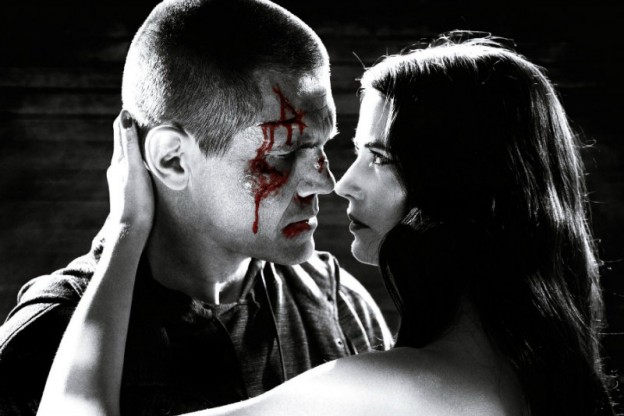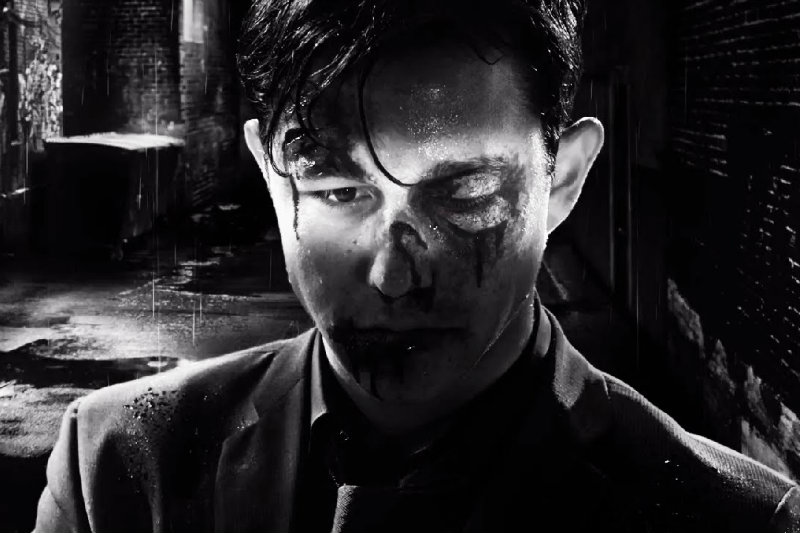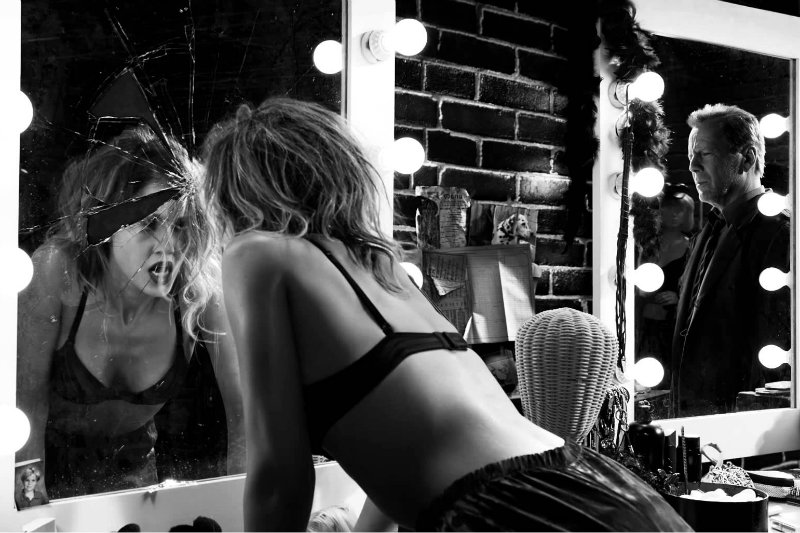It may have taken nearly a decade, but Sin City is back in theaters. The 2005 original film – directed by Robert Rodriguez (From Dusk Till Dawn) and Frank Miller – brought Miller’s hard-boiled neo-noir graphic novels to stunning life and recruited a laundry list of hot Hollywood talent to boot. However, the cinematic landscape has changed into one that might not so readily embrace a new adventure in the ultra-violent, politically incorrect universe of Miller’s work. Regardless, Sin City: A Dame to Kill for is trying its luck against fellow comic book films like Guardians of the Galaxy and Teenage Mutant Ninja Turtles. This might not be a good idea.
Much like the first film, Sin City: A Dame to Kill for is a tale (or several, in fact) fueled by revenge. There’s Nancy (Jessica Alba), who’s out to avenge John Hartigan (Bruce Willis) for some reason; Johnny (Joseph Gordon-Levitt), who has a score to settle with Senator Roark (Powers Boothe); and there’s Dwight (Josh Brolin), who has perhaps the most complicated relationship status of all time with the mysterious and sexy Ava Lord (Eva Green). Plus, there’s Marv (Mickey Rourke), who is just kind of there.
Sin City: A Dame to Kill for features a total of four stories, only two of which are derived from published works. The other two – the weaker ones – are new segments written by Miller specifically for this film. This fact lends credence to the notion that the acclaimed writer of seminal tales like The Dark Knight Returns has left his best ideas in the past, and the film’s jarring structure doesn’t do it any favors. For simplicity’s sake, let’s take Sin City: A Dame to Kill for apart one piece at a time.
The film opens with the Marv-centric short Just Another Saturday Night. This brief glimpse at the fan-favorite character doing what he does best (i.e. kicking ass) immediately recalls the best part’s of his storyline in the first film. Casually violent and yet imbued with his own sense of justice, Marv is certainly one of the more fascinating and fun-to-watch Sin City residents, and while this segment has no relevance to the other stories, it revs the audience up for a fun ride and gives Rourke the chance to reprise one of his most famous roles.
Next viewers meet Johnny in The Long Bad Night, and though Joseph Gordon-Levitt has shined in superior films like Looper, 50/50 and (500) Days of Summer, he can’t save this cliche-ridden mess. His brash character essentially beats the wrong man at cards, and the resulting tale lacks the fun, dark humor or mythology-building qualities that make the Sin City stories entertaining. The fact that the storyline is split into two segments doesn’t help much, as any suspense built up by its mid-runtime twist is instantly deflated.
The film’s centerpiece is undoubtedly its title story. Based on the second Sin City book, A Dame to Kill for is also the only segment that truly stands out. It’s most noteworthy as a prequel to the first film’s Clive Owen-led The Big Fat Kill. Here Brolin takes the lead as Dwight and delivers a solid performance, but it is Green who truly makes this segment work. Her commanding onscreen presence is the only one that helps to elevate the film beyond its often-schlocky script. Additionally, Jamie Chung and Dennis Haysbert serve as effective replacements for Devon Aoki and the late Michael Clarke Duncan, respectively. The story might not be the sharpest in the Sin City canon, but its twists and turns make it the closest this film gets to approaching the freshness of its predecessor.
Finally, Nancy’s Last Dance takes center stage. Alba’s performance as the stripper with a heart of gold was only notable in the first film because of her dance moves. Yet its sequel is mistakenly convinced that audiences wanted to see her lead her own story. Still struggling with Hartigan’s death, she is hellbent on exacting revenge on Senator Roark, despite that Hartigan only took his own life to ensure Nancy’s safety. Worse than being bland and uninspired, the very basis for this segment is resting on a shoddy foundation. The rest of its story elements are far-fetched, illogical and have an unmistakable air of desperation.
Although Sin City: A Dame to Kill for would have benefited from arriving in theaters years ago, the real problem with the film is a lack of imagination. Rodriguez and Miller don’t take any chances with this sequel, giving larger roles to lesser talent (Alba) and crafting subpar storylines (The Long Bad Night, Nancy’s Last Dance) instead of simply adapting Miller’s far superior published works. No doubt this move was facilitated by a desire to save some of those stories for a third film, but given the disastrous box office debut for Sin City: A Dame to Kill for, the franchise is likely just as dead as John Hartigan. It’s a pity, considering how much potential this world had for lively off-the-wall yarns full of larger-than-life characters. Too bad that the most surprising thing about this film, despite its violence, nudity and general depravity, is just how mediocre it actually is.
Rating: 2.5 out of 5
Sin City: A Dame to Kill for stars Josh Brolin, Jessica Alba, Mickey Rourke, Joseph Gordon-Levitt, Eva Green, Powers Boothe, Dennis Haysbert, Rosario Dawson and Bruce Willis. It is directed by Robert Rodriguez and Frank Miller and is now in theaters.



